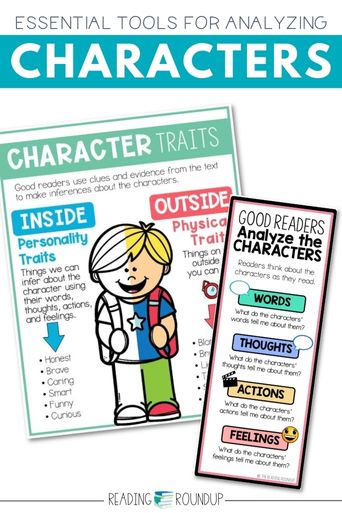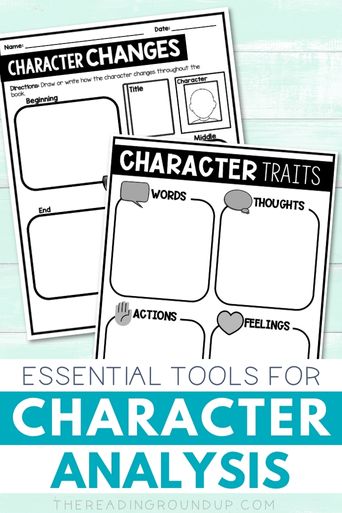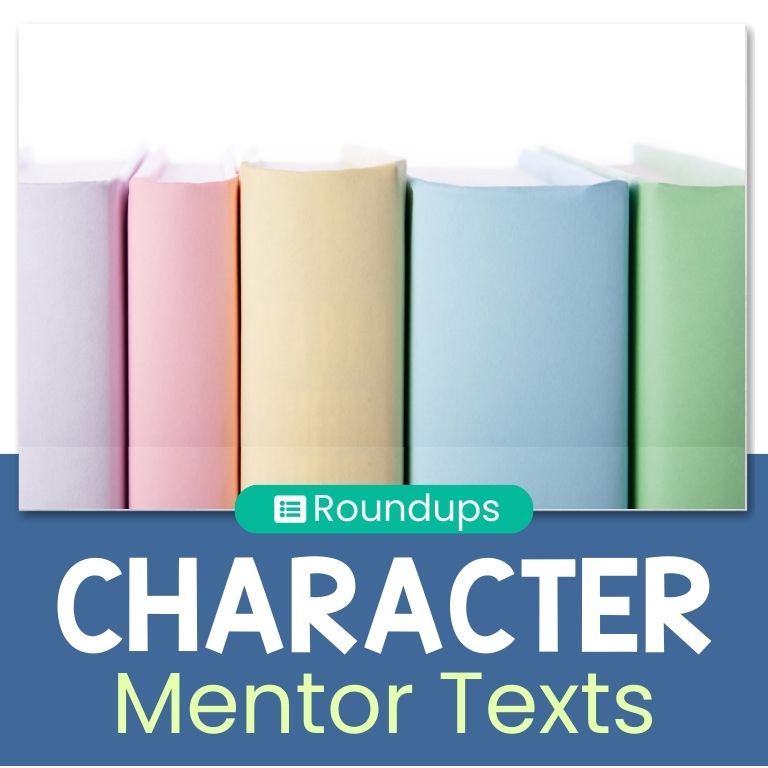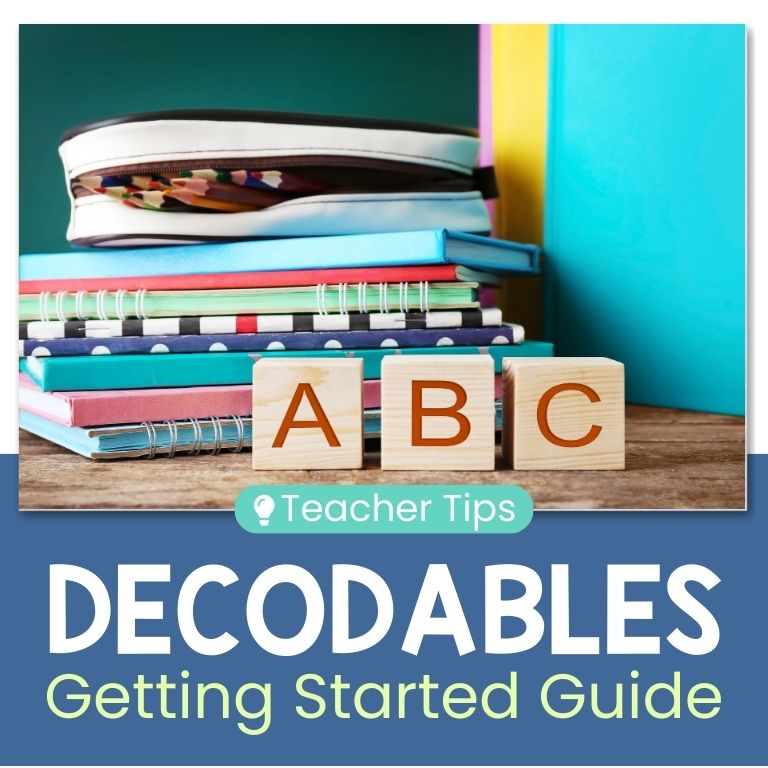
Have you ever found yourself lost in a story, completely captivated by the characters? That is what we want our students to experience and a great way to do that is through character analysis. Let’s explore tools and resources that can help your students dig deeper into the hearts and minds of their favorite characters. From vivid visual tools to effective scaffolds for learning, we’ve got everything you need for analyzing characters.
How to Teach Character Analysis
Demonstrate how to analyze a character using a think aloud as you read a story. Model how to look at the character’s words, thoughts, and actions to reveal a deeper understanding of their traits and motivations. Record your observations on a class anchor chart and explain what your observations tell you about the character. After explicitly teaching the strategy, encourage students to discuss their ideas about the characters with a partner. During small group instruction provide guided practice with analyzing characters through the use of discussion prompts and graphic organizers. Eventually, students will begin to practice the skill by themselves as they read.
Tools for Analyzing Characters

Learn how to teach character analysis with these helpful teacher tools and resources. These essential tools will make analyzing charcters much easier for students and your instruction more effective. Not only will students be successful with analyzing characters but they’ll also have fun doing it!
Character Analysis Mentor Texts
Choose texts with rich, well-developed characters that provide ample opportunities for analysis. Classics like “Charlotte’s Web” by E.B. White or more contemporary books like “Wonder” by R.J. Palacio are excellent choices. Discover additional character analysis mentor texts you may want to use to teach this comprehension skill.
Analyzing Characters Anchor Chart
Anchor charts are visual aids that outline the traits, motivations, and changes of characters which are a useful reference during lessons. These visual cues remind students of the strategies during whole group minilessons, small group instruction, and independent reading.
Character Analysis Anchor Charts May Include:
- Character Emotions Charts
- List of Character Traits
- Inside/Outside Traits
- Character’s Words, Thoughts, Actions, & Feelings
- Character Changes Throughout the Story

Character Analysis Prompts
Prompt students to analyze a character’s traits, actions, changes, motivations, relationships, conflicts, and emotions throughout the story to gain a deeper understanding.
- What words would you use to describe [character’s name]?
- Why do you think [character’s name] made a specific decision? What does this reveal about their character?
- How does [character’s name] interact with other characters? What do these interactions tell us about their relationships?
- How does [character’s name] change from the beginning to the end of the story?
- How do the challenges faced by [character’s name] help them grow or change?
Analyzing Characters Sentence Stems
Be sure to provide students with sentence stems to help them analyze characters. These sentence frames are especially valuable to primary students and English Language Learners who may not yet have the language to fully express their thinking. It can be helpful to post them in a place where students can easily refer to them to guide their discussions and written responses.
- [Character’s Name] is [trait] because [text evidence].
- The reason [character’s name] [action] is because __.
- The way [character’s name] interacts with [another character’s name] shows that __.
- At the beginning of the story, [character’s name] is __, but by the end, they are __ because __.
- [Character’s name] and [another character’s name] are similar because __, but different because __.
- The best/worst decision [character’s name] made was __ because __.

It can be helpful to keep a strategy cheat sheet with character analysis prompts that you can use with any text. This is perfect to keep at your small group table to use during instruction.
Character Analysis Graphic Organizer
Tools like character maps, Venn diagrams, and T-charts help students organize their thoughts and observations about characters.
Character Analysis Graphic Organizers can record:
- Character Traits
- Character’s Words, Thoughts, Actions & Feelings
- Character Changes
- Character Comparisons

Save time by creating a Reading Graphic Organizers file box to keep at your small group table. That way you always have copies ready for students to practice the skill!
Readers’ Notebook Page and Study Guide

A readers’ notebook page can remind students of the strategy, graphic organizer, and sentence stems to use when independently analyzing characters while reading.
Print a copy that they can use for additional practice at home.
Character Analysis Bookmark
Another option is for students to keep a Reading Bookmark in their book boxes to remind them how to analyze characters as they read independently or with a buddy.

Digital Tools for Character Analysis
Apps and websites like Storyboard That offer interactive ways for students to analyze characters. Padlet is another tool students can use collaborately to track character traits and/or changes digitally.
Strategies for Analyzing Characters
During small group instruction, explicitly teach students strategies for analyzing characters. Provide ample opportunities for guided practice before having students independently implement the strategy.
List the Characters
When reading novels, it can be challenging to remember details about the characters and how they relate to one another. Students can make a list of characters they encounter in the text with a few key details. They can refer back to this list in their readers’ notebook while reading to clarify their understanding.
Using Characters’ Emotions
Being aware of how a character is feeling enhances comprehension of the overall story.

Character Emotions Charts are a helpful reference tool to remind student of emotions words. They also help build vocabulary for English Learners and Early Readers.
Students can use characters’ emotions to:
- Think about what is happening and what the character says. Say it just like the character.
- Think about how you would feel if you were in the same situation as the character.
- Jot a word or sketch a picture to show how the character is feeling throughout the story.
- Think about how a character’s actions make another character feel.
- Act out character emotions. Record what you notice the actor’s body, face, and voice doing to demonstrate the emotion. Use these details in your writing.
Analyzing Characters’ Actions
A character’s actions can reveal a lot about them. Work with students in small groups to help them analyze character’s actions to reveal more information:
- Look for a character’s repeated actions to reveal traits about them.
- Identify when a character acts in a way that is surprising or different. What is the significance of this action?
- Identify how a character’s actions are making the other character think, feel, or act.
Teaching Tips for Analyzing Characters
Analyzing characters can be a very fun and engaging skill to teach; however, there are some things you’ll want to consider to ensure your instruction is effective:
- Use Diverse Texts: Provide a range of books that reflect diverse characters and experiences, helping all students see themselves in the stories they read.
- Encourage Text Evidence: Always ask students to support their character analysis with specific evidence from the text. Using the word “because” encourages them to use text evidence: I think ___ because ___.
- Differentiate Instruction: Adapt your teaching to meet the needs of all students, offering additional support or challenges as necessary. For example, English Learners will need more support building vocabulary of words that describe character’s traits and emotions.
- Foster a Love of Reading: Create a classroom environment where reading is valued and enjoyed, as a genuine interest in stories will naturally lead to deeper character analysis.
Activities for Analyzing Characters
While these tools are all scaffolds for students as they learn how to analyze characters, you may be looking for more specific activities to teach the skill. Be sure to check out the corresponding post with Character Analysis Activities that your students will love!
Save yourself time and money with this Comprehension Bundle! It includes ALL the tools you need for EVERY reading strategy!
You’ll find anchor charts, graphic organizers, and so much more!

What other tools have you found beneficial for analyzing characters?

WANT TO PIN THIS FOR LATER?















